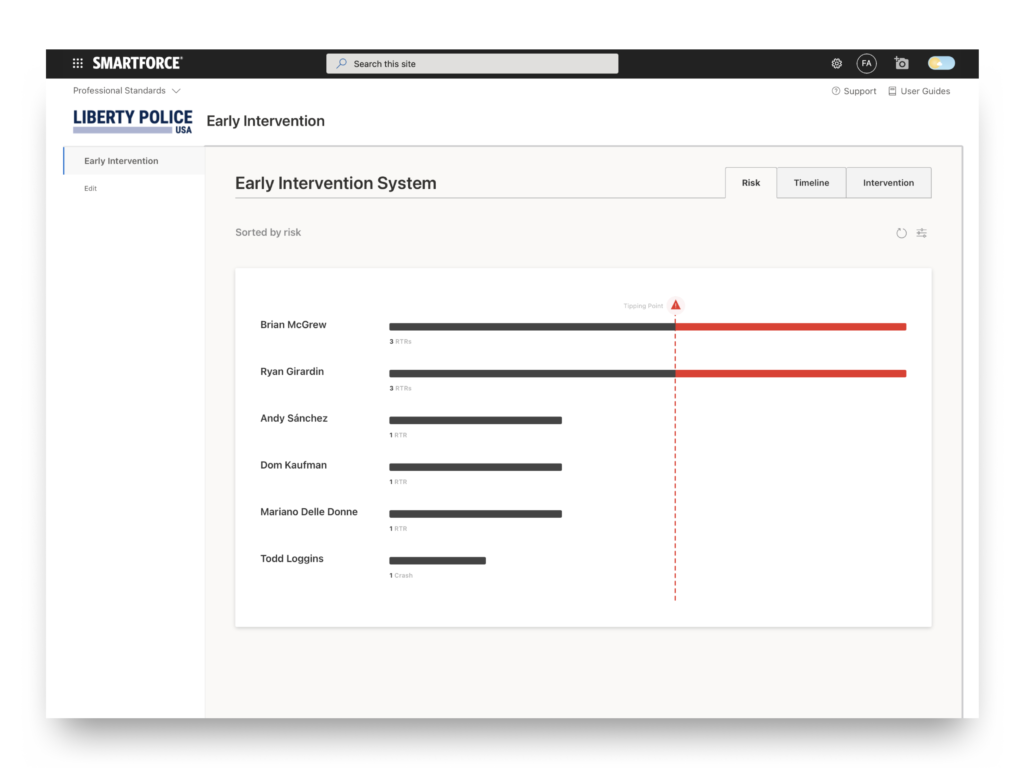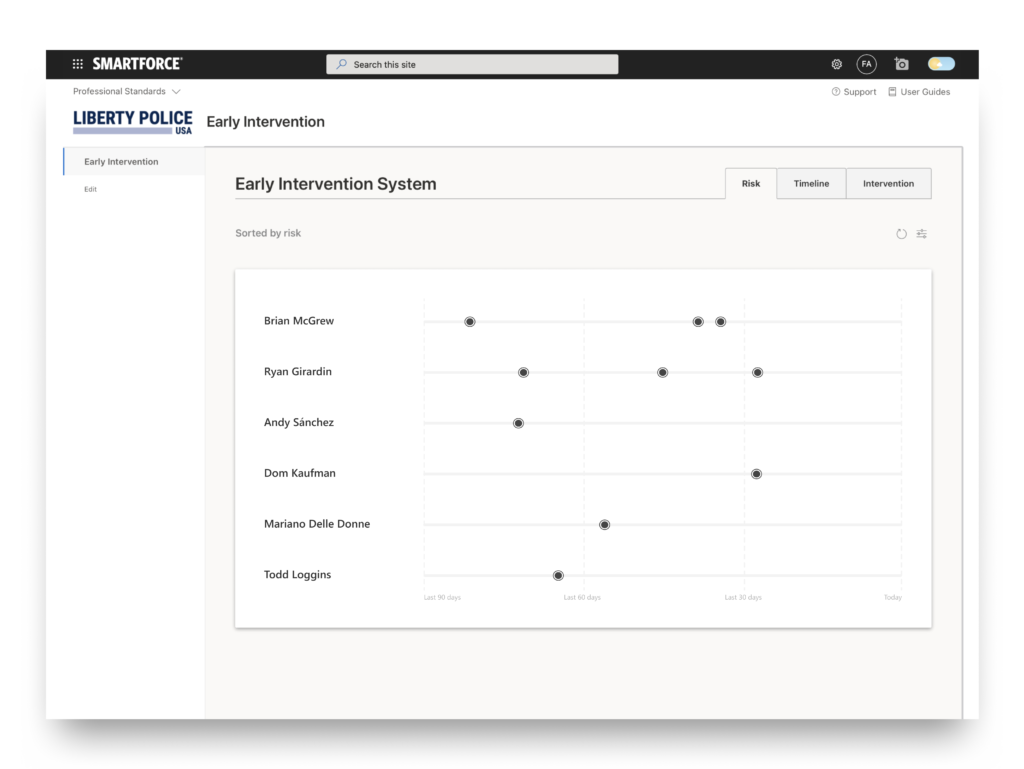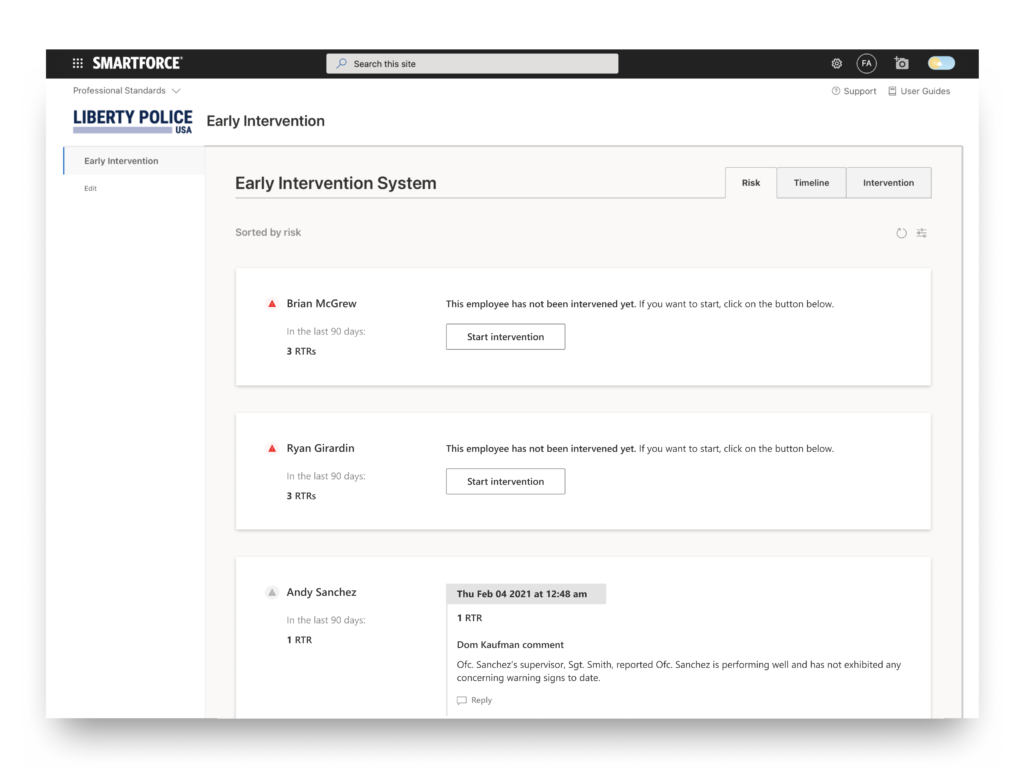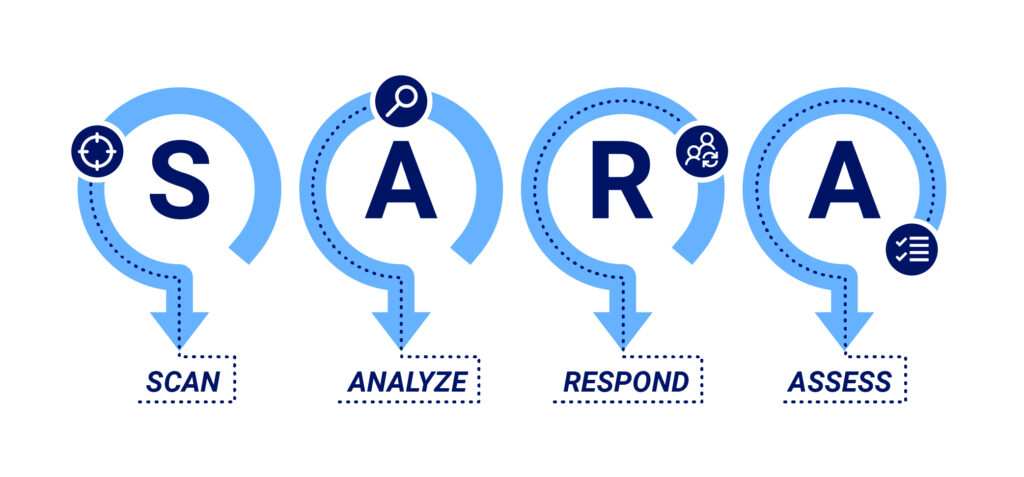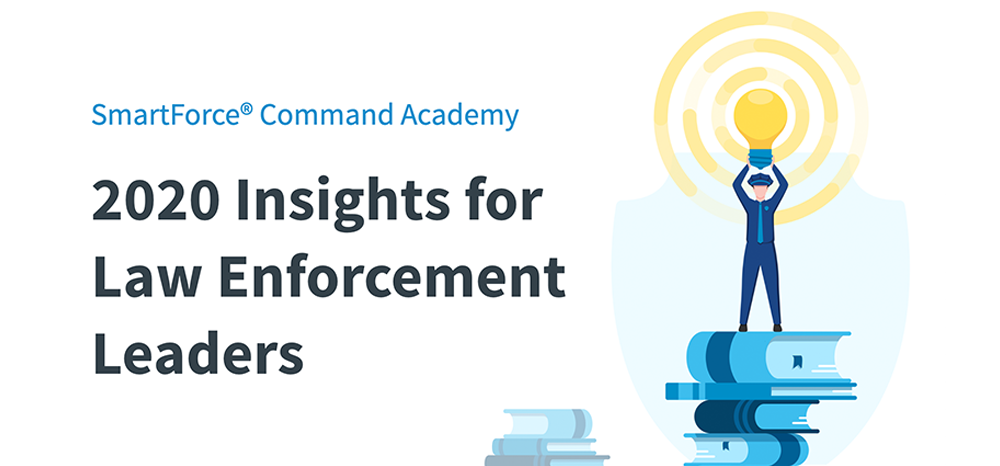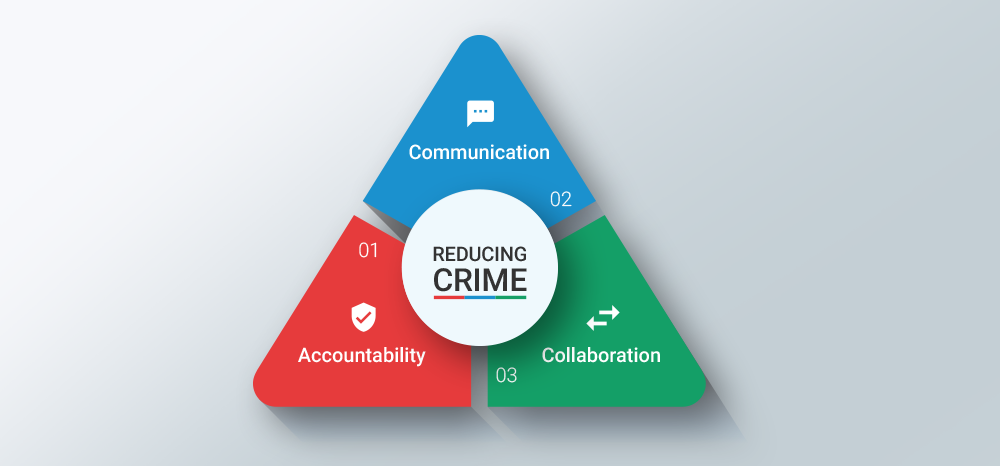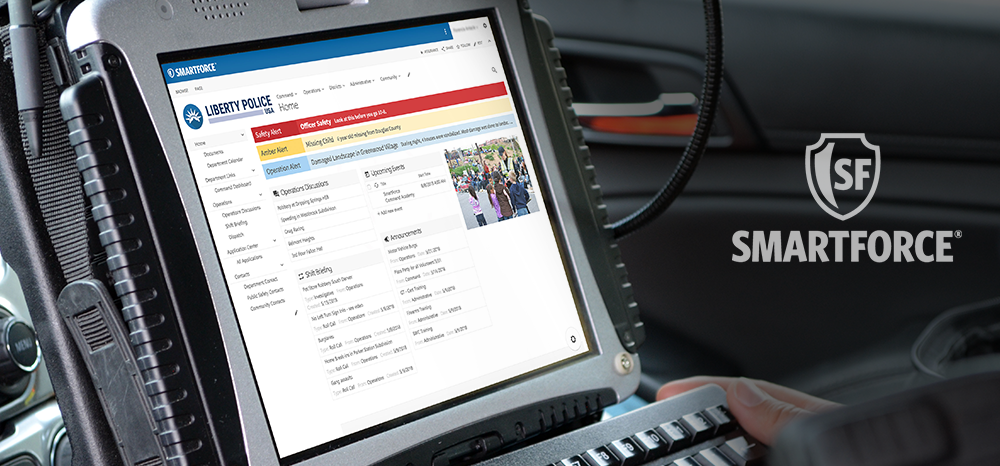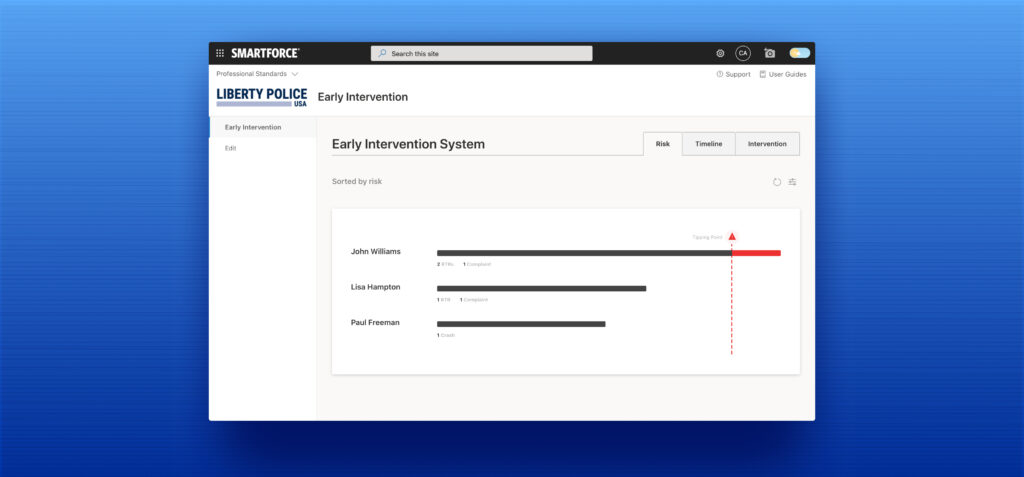
Improved and actionable data around officer performance and experience are indispensable tools in any agency focused on accountability and transparency. At SmartForce®, compiling, communicating, and sharing data are all at the core of our business and why we exist to support law enforcement. It’s not just agency management best practices, but it’s also logical to know what employees are going through, how they are performing, and know when they need support and accountability. That is why the Early Intervention System (EIS) in the latest release of SmartForce® was developed.
I continue to be proud and excited about our team’s ability to meet the changing needs of law enforcement. I’m particularly excited about the EIS system because it answers the call from the federal government for more data, from the public for more transparency, and very importantly, from chiefs and other agency leaders themselves for more ways to manage their force. Local agencies can use the module to set their own parameters for warning signs and priorities so they can be notified in near real-time when an officer is at risk before the risk becomes a problem. We made the new system a tool that empowers agencies to use their own data to support their force internally so officers can be at their best while serving their community.
Here’s how it works. The department lead sets the risk weight for each type of incident and the number of incidents to establish a tipping point. As officers are involved in incidents such as response to resistance, complaints, pursuits, or crashes, the EIS Dashboard displays all of the officers and ranks them from top to bottom on risk though a one-of-a-kind SmartForce® algorithm. It also displays how close they are to the established tipping point. For officers near or at the tipping point, supervisors can document interventions including counseling, re-assignments, etc. to mitigate risk to the officer and community alike. (To learn how to get the most out of this EIS for today’s law enforcement needs, Brian McGrew wrote an excellent blog where he outlines practical strategies for Professional Standards units in using EIS to track officer performance as well as wellness and sharing EIS data to drive accountability and transparency.)
The EIS solution, much like our entire software, is designed to distill complex data into useful information for officers to use immediately. The software immediately integrates reports and data that would take hours for a human analyst to interpret and without bias of human error to show when an officer is at risk and needs help. Without Early Intervention, the supervisor would have to rely on his or her own mental or manual data tally of what all his officers have been going through. The system tracks reports and incidents as they happen and produces a clear and fair picture of what’s going on for all officers. Departments otherwise would have to wait days, weeks, and sometimes months for investigations and reviews to be completed before such data about officer experiences are available. As one can imagine, these timelines are too long and many officers would have gone past the tipping point in terms of risk without a real-time early warning system. Once an officer is identified by the system as getting close to the tipping point or having gone past the tipping point, the department lead knows how many incidents and which type of incidents the officer has been involved in that led to the determination. He or she can then decide appropriate actions and document them in the system.
Here are a few screenshots that show how the data is at the user’s fingertips. As a supervisor, I open up the EIS and the “Risk” tab to see where my six officers are in terms of risk. (See Screenshot 1 below.) I started monitoring these six because they all had at least one indicator of risk within the last 90 days. Immediately, I see that Brian and Ryan both have crossed the tipping point with three response to resistance (RTR) incidents each. Andy, Dom, and Mariano each have one RTR so they are not at the tipping point. I can also see Todd has one indicator of risk in the same time period, but he is further from the tipping point because a car crash holds less weight in terms of risk than an RTR.
Screenshot 1: The “Risk” tab shows where officers are in relation to the tipping point.
I then open the “Timeline” tab for more details on the risks. (See Screenshot 2 below.) From here, I can see that Brian not only has three RTRs, but two of them happened in a tight time span. Seeing multiple incidents occur around the same time period may help me better prepare for an intervention counseling session with Brian.
Screenshot 2: The “Timeline” tab shows how many incidents and when they took place in a predefined time frame.
By looking at the Risk dashboard based on the algorithm set by the department parameters, Brian and Ryan are at risk. Ideally, we would have a policy in place about what type of intervention should be employed for every officer like Brian and Ryan who show up at-risk in the EIS. This is the best way to make sure officers are prepared for duty and able to serve their community. Further, it also gives the department a chance to check in with Brian and Ryan to make sure their wellness needs are met and let them know three RTRs in two months would be hard on the best of officers. Once the appropriate intervention is determined, I would log it in the system like the comment for Andy on the “Intervention” tab. (See Screenshot 3 below.)
Screenshot 3: The “Intervention” tab keeps track of the interventions that were used in response to risk incidents.
We are very excited for our customers to put this valuable tool to immediate use. For more details on the module, see our press release here.
The latest release notes on the new version that includes this module can be found here.
As always, talking to us is the best way to learn more about our products and teach us about your needs. Please feel free to reach out.

